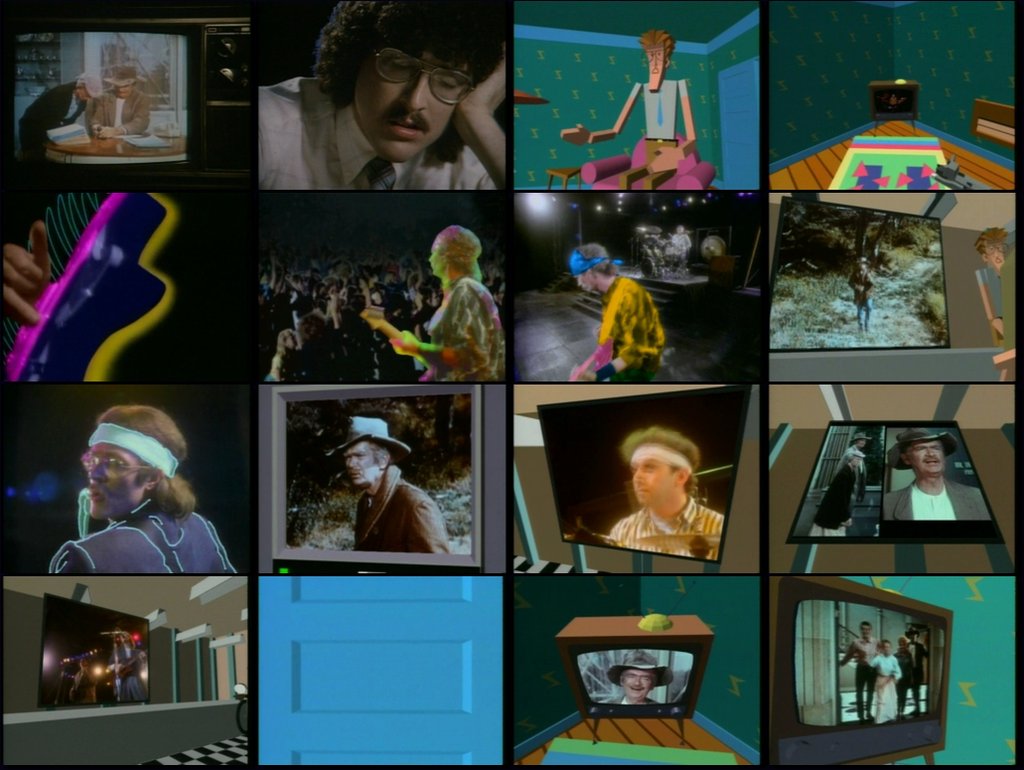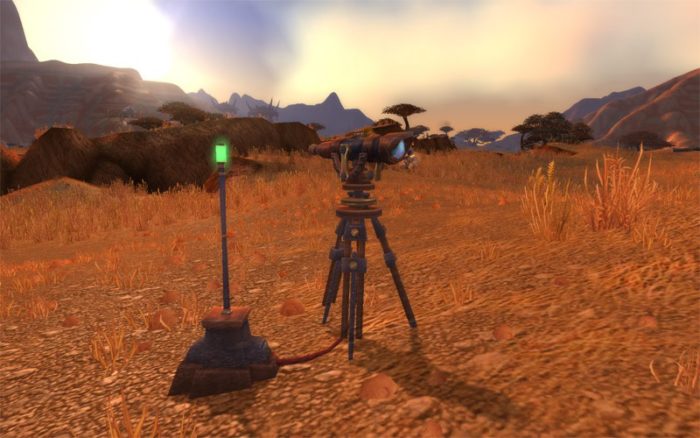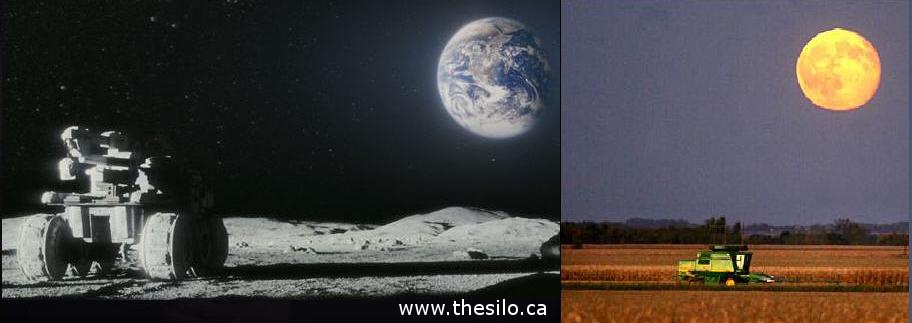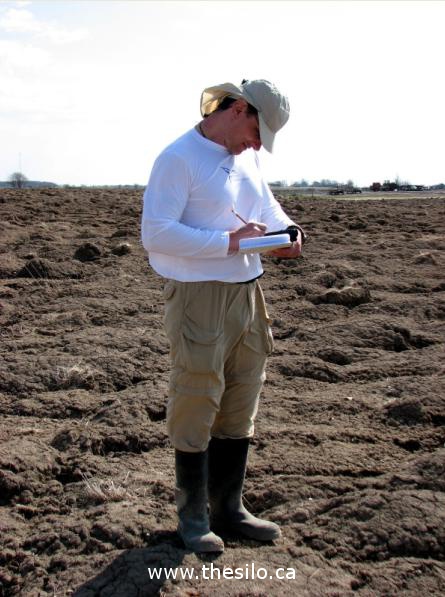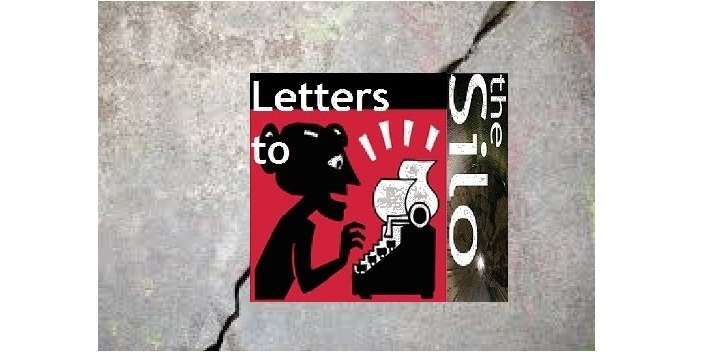Visit msnbc.com for breaking news, world news, and news about the economy
Money For Nothing Is About Angry Men
 I have been following, with some amusement, the media firestorm unleashed since the Canadian Broadcast Standards Council decided in mid-January that the classic, 25 year old Dire Straits song Money for Nothing must be censored. According to the CBSC, times have changed and the word “faggot” is now inappropriate for Canadian airwaves. The CBC, National Post, and newspapers from Edmonton to Ottawa have all weighed in, including our own Simcoe Reformer, expressing outrage over the censorship of a critically acclaimed work of art and, well, political correctness just generally gone mad. While I agree that this is a censorship issue, you have to dig to find commentary about why it’s such an interesting one.
I have been following, with some amusement, the media firestorm unleashed since the Canadian Broadcast Standards Council decided in mid-January that the classic, 25 year old Dire Straits song Money for Nothing must be censored. According to the CBSC, times have changed and the word “faggot” is now inappropriate for Canadian airwaves. The CBC, National Post, and newspapers from Edmonton to Ottawa have all weighed in, including our own Simcoe Reformer, expressing outrage over the censorship of a critically acclaimed work of art and, well, political correctness just generally gone mad. While I agree that this is a censorship issue, you have to dig to find commentary about why it’s such an interesting one.
If you put the lyrics together with the music video, the song appears to be written from the perspective of two furniture and appliance movers watching the early days of MTV at work. They are making their case to one another, colourfully, that rock stars get their “money for nothing” (you’ll recognize the song title) and their “chicks for free—” the implication being that if these two very hardworking fellows are getting any “chicks,” it’s because they’ve paid for them. The lyrics at the centre of the debate are as follows:
“The little faggot with the earring and the makeup (ya buddy, that’s his own hair).
The little faggot’s got his own jet airplane. The little faggot is a millionaire.”
Now that really is a lot of “faggots” for family hour, to be sure. But in context, the song does not read as homophobic. On the contrary, it is a parody of some hard-talking, blue collar guys and their feelings about rock stars—written, remember, by rock stars (and yes, that is Sting on background vocals).
I was in high-school when this song came out and I can’t tell you how many jocks and future frat boys sang it to me on the bus, thinking they were making a cruel and clever joke. The irony wasn’t lost on me. They weren’t paying attention: not to the song, or to themselves, or to the disconnect between their affection for makeup and leotard wearing glam-metal bands like Poison and Cinderella—even Motley Crew—and calling me “gay” for dressing like I was in The Cure. But I guess that’s more hypocrisy than irony, and this is starting to become revenge.
Here’s another level of irony: censoring the word “faggot” actually neuters songwriter Mark Knopfler’s commentary on, if not homophobia, then at least a kind of prejudice based, seemingly, in resentment. Knopfler’s characters—and that is what they are—see the stars of MTV as representative of an easy life, as far away from their backbreaking drudgery as the moon. Looked at in this way, they are not quite the same as the blustery boys on my school bus. But they have something in common: for them, calling someone a “faggot” isn’t necessarily a comment on sexual orientation. It’s more a measurement of traditional masculinity.
But what about blatant racism? There’s another line in this song that’s not even part of the current censorship debate. “What’s that,” our refrigerator movers continue? “Hawaian noises? They’re bangin’ on those bongos like a chimpanzee.” OK, apparently there have been no angry calls to the Standards Council about that line. If there was any doubt before, Knopfler’s picture of these men is now crystal clear…if you’re paying attention.
The moral of this story? I’ll tell you my favourite: It is a dangerous thing to release a controversial work of popular art that requires careful reading. And one question remains: who taught the brainiacs at the CBSC to read? JS
CBSC is the Canadian Broadcast Standards Council, who act to ensure that an acceptable code of operation is met for media broadcast. This means that they control what you and I are “allowed” to hear and see. If you agree that censoring a classic rock song because it has been misinterpreted is wrong, please add a “like” to the link on our Facebook wall. It seems that Canadians have been blocked from viewing the unedited Dire Straits Money for Nothing video from Youtube as well, so here’s a little gem to enjoy instead. – Content Producer
Archaeology Added To World Of Warcraft Expansion Pack
In the videogame world there’s immersive gaming and then there’s immersive gaming. Take Blizzard’s World of Warcraft for example. Not only can you buy “virtual treasure and items” on eBay using real life money, there’s a new cataclysm expansion pack that allows your character to learn a new archaeology skill and visit “virtual dig sites” to gather your own artifacts. This sort of ingame depth and detail is why over 12,000,000 people spend a great deal of time “existing” in the virtual World of Warcraft.
Featured image- middlesavagery.files.wordpress.com
Southern Ontario Four Hundred Billion Years Ago

Picture yourself swimming in the shallows of Lake Erie over 400 million years ago. You might come up with all kinds of ideas of what primitive life was like. Some might imagine archaic sharks and bony, lobe-finned fish, but I bet very few would conjure up Phacops Rana.
Great Eyesight
This specialized trilobite can be found throughout Norfolk County in shale deposits and occasionally on our beaches, embedded in fossilized chunks of coral. One member of The Silo team discovered a beautiful specimen preserved this way, but it takes a keen eye to recognize them. That’s because the only way to find them is to identify the one feature of Phacops Rana that is its namesake: phacopid eyes. You see, this trilobite had two large eyes that were full of round, swiveling lenses, giving the creature an advantage when it came to escaping predators.
Cultural Artifacts Complicate Plans For Any Construction
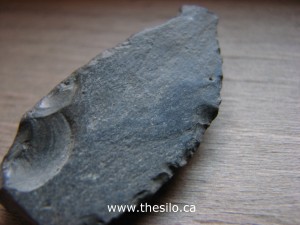
This stone shows signs of ancient human manufacture. Percussive bulbs result from being hammered and chipped, and facial flaking along the sides are strong indicators. It was retrieved in April 2010 from the then drained shoreline of Silver Lake millpond in Port Dover, Ontario. In the vicinity of the stone were animal bones and glacial till.
According to Ontario’s Heritage Act– municipalities must
- Provide clear standards and guidelines for the preservation of provincial heritage properties.
- Enhance protection of heritage conservation districts, marine heritage sites and archaeological resources.
Even when cultural artifacts are not immediately discovered, a cultural assessment must take place to establish any archaeological remains. The Cayuga Bridge construction project was delayed due to this requirement.
The Rocket Film Is Satisfying In Both Our Official Languages

The Rocket is a story about a man, a husband, a machinist and a hockey player; a man juggling a day job, a marriage and a passion to play “the game.”
His journey is classical and it has all of the elements of a Greek comedy, with the effect, just like in the Aristotelian tradition, of purging our souls of fear and pity- it is a catharsis. The fact that this is the story of a hockey player trying to make it in the the big time is something many Canadians can relate to: the quest has become a modern day myth in itself with legions of hockey parents secretly living the dream vicariously through their children.
Imagine, then, the impact that Maurice Richard had on an entire generation of francophones. During his playing years, many French-Canadians suffered through an undisguised social prejudice; Richard perhaps more than most. But this was a man who never gave up for long. Despite the stigma of being French, and a labourer; despite being viewed as “too soft, too small for the game,” Maurice Richard rose above and became “The Rocket”. For the Silo, Jarrod Barker.
Playing on Netflix at the time of this writing. Watch for Shawn Avery the pesky New York Ranger left-winger in a casting coup.
C’est une histoire au sujet d’un homme, d’un mari, d’un machiniste et d’un joueur d’hockey. Un homme jonglant un travail de jour, un rapport et une passion de jouer « le jeu ». Son voyage est classique et il a tous les éléments d’une comédie grecque et a l’effet de, juste comme dans la tradition aristotélicienne, purgeant notre âme de la crainte et le plaint est une catharsis. Le fait que c’est une histoire d’un joueur d’hockey essayant de faire le de premier rang est quelque chose beaucoup de Canadiens et Norfolkers peut se rapporter à et cette recherche est devenu un mythe moderne de jour en soi avec des légions d’hockey parents secrètement la vie le rêve délégué par leurs propres enfants.
Imaginez alors l’impact que Maurice Richard a eu sur une génération entière de francophone. Pendant ses années de jeu, beaucoup de Canadiens français ont souffert par un préjudice et un Richard sociaux ouverts
peut-être davantage que les la plupart. Mais c’était un homme qui n’a jamais abandonné pour longtemps. Contre les confins d’être un canadien français, contre les confins d’être un travailleur, contre les confins de l’visionnement en tant que « trop doucement, trop petits pour le jeu.
Maurice Richard est devenu le Rocket.
Maintenez une surveillance pour un garde forestier embêtant Shawn Avery de New York de gauche dans un coup de bâti.
Barmy stencil

Moon
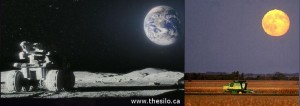
If you’re like me and grew up on a rich diet of 1980’s science fiction films, you should walk (no make that moonwalk) to your nearest video store and ask for MOON. This little gem is an existential journey into the mind of a lonely farmer-astronaut and hits close to home. Sure there’s the usual high contrast and gritty sci-fi production values, but there are also some poignant connections to our rural habitat. Picture a massive, rambling, white combine harvester gathering hay under a full, late fall moon, except that in this case the moon is the earth. A tiny, lonely man is hunched over the controls in an elevated and sealed cockpit. Now remove all semblance of colour, add a few craters and hills, and you get part of what makes this film so familiar and, dare I say, rural.
Growing up here as a boy I imagined that the once plentiful silos and drive-sheds in Norfolk (especially the aluminum ones) were rocket platforms and moon bases. Even the large, four wheeled crop sprayers had a space age look to them. And that is why I felt especially connected to Duncan Jones’ incredibly moving MOON. It pulled me in and felt familiar.
If I had to bet the farm I’d say the production designer looked at both farms and farm machinery while working out the aesthetics of this movie. But more than that, the story pulls at your heartstrings.
Sam (played by the remarkably versatile Sam Rockwell in a breakthrough role) is a lonely astronaut working on the moon, farming the soil for energy until he begins to suffer from extreme isolation- complete with lucid dreams and hallucinations. What follows next is one of the finest surprise plot twists in contemporary cinema.
Satisfying space fiction from son of iconic rocker David Bowie. For the Silo, Jarrod Barker.
Rural Ontario Archaeology
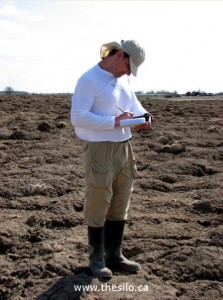
I was raised in the dairy farming community of Jarvis in Haldimand County. Since dairy was on the decline my family and I decided I would go to university. I began the study of archeology, and The Haldimand Norfolk Archaeological Research Project (HNARP) is a scientific study intended for my doctoral dissertation.
I selected this region because as a youth I walked across many of the county concessions and came to have an understanding of the landscape. In addition, there is continuous encroachment on the farm lands in the form of housing subdivisions in growing communities, industrial development along the lakeshore, and external landowners waiting to develop the land. The long term goal of the HNARP is to improve current evidence of prehistoric climate change and to determine its impact on early people. A study has never before been undertaken in Ontario over such a large parcel of land, and it needs to be done now before the opportunity is lost forever.
When the Laurentide ice sheet began receding 20,000 years ago the lands left behind were devastated by glaciers that destroyed plant life and any chance for animal or human survival. The first hints of people in the region date back 11,000 years. Evidence of their existence is in the form of stone debris and tools left behind on the ground. In fact, Haldimand is the locus of our study because of the abundant chert formations in the region (chert is a type of flinty rock). These were a continuous draw for early people constantly in need of stone for tools and weapons. This same geology is the source of the quarry rock that provides jobs and careers in the community today.
Which brings us to one of the most rewarding outcomes of this kind of archeology: the people of Haldimand-Norfolk will begin to understand their relationship to the land as part of a 10,000 year history of human habitation. By systematically studying the major watersheds we can learn much of both archeological and environmental importance. Settlement patterns emerge. We begin to see how fluctuations in the climate of the Great Lakes region impacted plant and animal life, and the seasonal availability of certain foods. As we learn about the past we discover connections to the present, and can plan more effectively for the future. But the evidence we need can only exist under certain conditions, and development is not one of them. The HNARP must act now to learn what we can.
Our success depends on agricultural landowners acting as stewards, to preserve and protect archaeological sites so they can be properly interpreted and understood. People are often concerned about what an archeological study on their lands might mean. Let me alleviate some of those concerns. The HNARP regional study is conducted on private property. That means simply: your land remains your land. All information relating to this scientific study is strictly private and confidential. No information is made public or shared with any institution or public organization. Generally, landowners can continue their farming practices without any interruption from this study.
One of the most interesting aspects of our work is something we call “community archaeology.” Interested community members can volunteer to be trained in to work with HNARP members, and become part of the discovery themselves. For the Silo, Lorenz Bruechert.
The Brothers Bloom

D: Rian Johnson
I always get a little nervous when a movie starts with voice-over narration. Perhaps I shouldn’t– lots of good movies, especially American ones, begin with this omniscient voice. It’s arguably a lazy device, but effective if you want to pack a lot of background into a few short minutes. The Brother’s Bloom, writer/director Rian Johnson’s second major studio feature, manages to stand apart even in it’s use of this usually prosaic staple. Listen closely: the narration rhymes.
It turns out to be an appropriate opening gesture. The brothers, extremely literate con-men played by Mark Ruffalo and Adrien Brody, inhabit the modern world like glamorous anachronisms, gentlemen thieves in elegant suits who travel by steamer and luxury train. Into this consummately stylish dream falls–by no accident–Penelope Stamp, eccentric heiress and principle mark of their final job, played to perfection by Rachel Weisz.
Weisz is like heaven to watch. I can’t remember finding a woman so flawlessly beautiful for two straight hours (trust me, I’ve talked to a therapist about that irritating perfectionism). And a big part of the beauty of Penelope Stamp, apart from, or maybe as well as, her sad brown eyes and angelic countenance, is her deep intelligence, charm, whimsy and wisdom. Johnson has created a very compelling character here, and Weisz eats it up, scene after scene.
Another standout, in a movie full of standout acting, is Rinko Kikuchi as the brothers’ nearly mute and certainly odd explosives expert Bang Bang. Kikuchi has been a rising star in Japan for several years now–you can watch for her in some upcoming english-language films as well, notably Mikael Hafstrom’s Shanghai (she will take the lead in Ahn Hung Tran’s Norweigan Wood). Or just marvel at her here, as she carries on whole conversations without saying a word.
With The Brothers Bloom, Rian Johnson has assembled a stellar cast to follow his smart and very stylish lead, creating a film full of interesting, funny, even beautiful moments. Just wait until the tree falls over. I don’t think my telling you will ruin a thing.
Widely available on DVD.
Early Canadian Artist Decorated Ceramics From Nuttal Codex

Eva Brook was born in 1867, the year of confederation and, interesting as well, the incorporation of Moosehead Beer. Auspicious beginnings. Her Simcoe family owned The Brook Woollen Mill, and like many privileged children of her time she attended private school. She was fortunate to study art under Frederick Bell Smith, the renowned Canadian-Victorian painter, at Alma College in St. Thomas. Brook would later return to Alma as a teacher, and in fact headed the art department there.
In the 1890’s Eva emigrated to Mexico, where it seems she operated a bookstore, and where she may also have re-connected with her soon-to-be husband A.W. (Will) Donly, who she had known from school. After their marriage in Norfolk, the couple returned to Mexico where Will had taken the post of Canadian Trade Commissioner.
Eva’s skill as an artist continued to develop against the backdrops of her upper-class life in a diplomatic household, as well as the unrest following the 1910 Mexican revolution (though her paintings, as shown, do not reference the violence of that time). She made friends with the archaeologist Zelia Nuttal, who had developed a system for decoding the symbols of pre-Colombian art, and the current exhibition contains ceramics Brook-Donly decorated based on the Nuttal codex, as well pieces from her collection of Aztec pottery and artifacts.
After the Donly’s return to Canada Eva embraced the emerging, modern painting style of Tom Thomson and The Group of Seven, and her work began receiving more attention. In The Review of the Royal Canadian Exhibition, an article which appeared in Canadian Forum, December 1920, she is mentioned alongside Arthur Lismur, Franklin Carmichael and A.Y. Jackson. There are some hilly landscapes in some of her work that appear to directly quote Jackson’s treatment of the same.
It may be hard to fathom now but in 1920 The Group of Seven represented a revolution in Canadian painting, rankling the sensibilities of many established and more naturalistic artists. That Eva was attracted to their work, and understood it, suggests a progressive spirit–that is if picking up and moving to Mexico in the 1890’s was not enough for you. Any doubt will surely be erased by her decision to study with the American artist and designer Ralph Johonnot. His use of colour was vivid and idiosyncratic and his images, as one writer of the time put it, were like “illustrations for a fairy tale.” Brook Donly’s experiments with this style veritably leap out from among her other paintings as if they were sitting under a black light.
The impact of Mexico continued to feature in her art through the 20’s as well. If she picked up an interest in pattern design from Johonnot, she combined it to great effect with Aztec and Maya motifs to create striking, two-colour images for ceramics.
Eva Brook Donly was an early figure of the Simcoe establishment and one of the first members of the Norfolk Historical Society. For the Silo, Chris Dowber.
Disaster Themed Comedy Not Funny
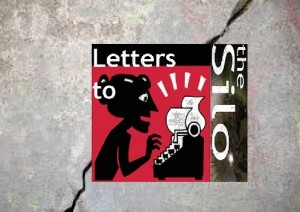 Dear Silo, I’m tired of jokes about the oil spill. Leno. Letterman. On June 1st 2010 John Stewart dedicated the entire “fake news” portion of his show to jokes about the spill. It’s true that much of the humour contained social and political commentary. But it wasn’t “funny.” Still, Stewart and his audience were killing themselves. Appropriate, I guess, since this issue highlights how we are all killing ourselves.
Dear Silo, I’m tired of jokes about the oil spill. Leno. Letterman. On June 1st 2010 John Stewart dedicated the entire “fake news” portion of his show to jokes about the spill. It’s true that much of the humour contained social and political commentary. But it wasn’t “funny.” Still, Stewart and his audience were killing themselves. Appropriate, I guess, since this issue highlights how we are all killing ourselves.
On the other hand, I like that his whole show was about this. Why is anyone talking about anything else? I know, life continues (for now). The World Cup is on. The Canadian auto sector is rebounding (perfect). Activists are crashing the Gaza blockade.
But you know what, I don’t care. Why aren’t we all parking our cars until we can convert them to run on biodiesel or excrement? Why are we watching Glee or driving to Dairy Queen or making love? Why are we not all in the streets in sackcloth and ashes, of one accord?
The world’s experts aren’t able to fix this leak, proving, as an acquaintance of mine pointed out, that there actually are no experts on how to fix deep sea oil leaks. They just know how to pump oil. And we all seem content to let them keep pumping oil for us. We shake our heads at the television footage and point fingers at negligent corporations and politicians, and then go back to pumping gas. Pumping hands. Making business deals. Making love.
In Cat’s Cradle, Kurt Vonnegut proposes that at the end of the world, when the planet is truly and fully dead, the few surviving mammals will lose their sex drive. No drive to reproduce (what for?), to survive. No drive. Now that’s funny. Alan Dowber.
